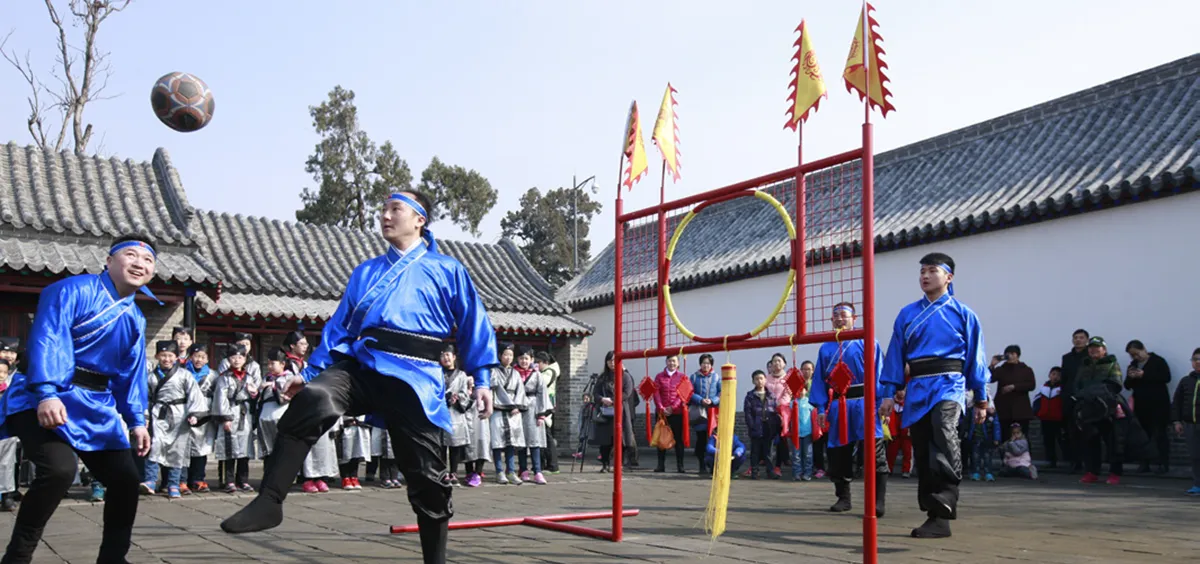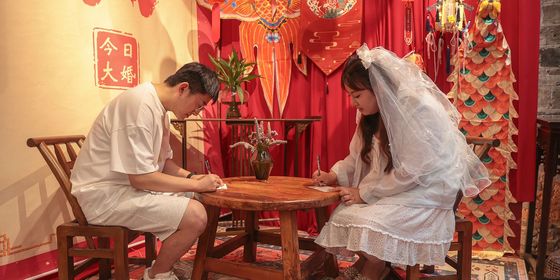A 4,000-year-old sport from Shandong province could be the world’s oldest form of football
China’s national football team evokes a range of heartbreak for fans. It only qualified for the World Cup once, and ended up losing all three of its games with no goals scored. Still, there is one thing that makes fans proud: China might be the birthplace of the “first sport in the world.”
It is widely acknowledged that modern football originated from a simple ball game played between villages in England for centuries, which was formalized in 1863; however, in July of 2004, FIFA’s disgraced former President Joseph “Sepp” Blatter announced at the opening ceremony of the Third International Football Expo in Beijing that football originated in Linzi, Zibo, of Shandong province. One year later, the delegation of Linzi was invited to the closing ceremony of the FIFA centennial in Zurich and awarded the certification for the origin of football, despite there being no direct historical lineage between ancient Chinese cuju (蹴鞠) and modern football.
The controversy over the decision to award Linzi with such an honor has not stopped China from embracing the title. At Linzi’s Football Museum (足球博物馆), visitors can see the process of how the town gained recognition as the birthplace of football. All of the relevant reports, photographs, films, and documents are on display. Here you can also learn about the development and popularity of football around the world. Patrons should check out the ancient cuju exhibition hall on the first floor, where they can get a glimpse of an unearthed ancient football stuffed with feathers, learn the traditional rules of the game, and explore the ball-making craft.
The historical traces of Chinese ballgames date back four or five thousand years, when spheroid stone implements were used in hunting and fighting. The stone implements were more commonly used as tools and then eventually for entertainment.
Legend has it that the legendary Yellow Emperor invented cuju, which literally means “kick ball.” But the earliest descriptions of the game were found in Records of the Grand Historian and Strategies of the Warring States (《战国策》), which state that in the Spring and Autumn (770 – 476 BCE) and the Warring States periods (475 – 221 BCE), cuju was played for entertainment in Linzi, the capital of the State of Qi.
It was during the Han dynasty (206 BCE – 220 CE) that a competitive form of cuju emerged and was used for training military cavaliers. Famous military general Huo Qubing (霍去病) was recorded playing cuju in the army when he was fighting in the Western Region. By that time, cuju had developed a system of special rules, professional books for learning the game, and certain strategies.
During the Tang dynasty (618 – 907), the feather-stuffed ball was replaced by an air-filled ball with a two-layered hull, and women’s cuju became popular. It was in the Song dynasty (960 – 1279) that cuju began to take on a commercial edge; many civilians became professional players and made a living by playing the game. Some of them were even specially trained to perform for the royal court.
Under the reign of Emperor Zhu Yuanzhang (朱元璋) of the Ming dynasty (1368 – 1644), cuju was forbidden in the army, and its popularity weakened. In the Qing dynasty (1616 – 1911), in order to maintain Manchu rule, the government tried to suppress Han culture, and many traditional Han games were banned, including cuju, resulting in the eventual demise of the sport.
Excerpt taken from Rivers Deep, Mountain High, TWOC’s guide to Shandong. Find it in our online store, or get a free copy on WeChat!













